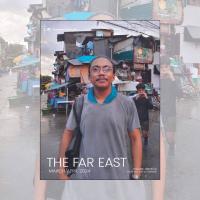 Language, history and cultural studies formed the first mission challenge when I arrived in South Korea in the late 1960s as one of a group of 10 newly ordained Columbans. A big blessing for us was attending a newly created Franciscan language school. Post Vatican II, the Franciscans set up schools staffed by professional linguists to serve missionaries in many countries.
Language, history and cultural studies formed the first mission challenge when I arrived in South Korea in the late 1960s as one of a group of 10 newly ordained Columbans. A big blessing for us was attending a newly created Franciscan language school. Post Vatican II, the Franciscans set up schools staffed by professional linguists to serve missionaries in many countries.
I was curious about all things cultural. Even though the nation was still suffering the effects of war and social change, in the cities and countryside it held many traditional festivals. Some were for fun, but many were religious in nature.
The first festival I attended was at a temple dedicated to Confucius. The extremely formal offering of various types of food and the recitation of verses formed the heart of the ceremony; ordered and restrained in the spirit of Confucian teaching.
I was surprised when a large group of young men began to dance. They were evenly spaced in the form of a large square. The slow moving choreography was marked by the equally slow beat of hammers on wood. The dance and the percussion were hypnotic.
Visiting a spring festival in a provincial town, I first witnessed the Farmers Dance. Its style and spirit were totally opposite to the Confucian Dance. Tin whistles and brass cymbals, skin covered hourglass drums and tambourines created the music: loud and fast, happy and carrying a strong beat. Young people in traditional farmers dress danced, spinning and leaping. They had a spindle attached tightly to their headgear with bright ribbons streaming. These flashed as the dancers twirled.
Different again was a performance of the Monks Drum Dance. Some Buddhist monasteries use dance as a form of choreographed meditation. The monks form a line with a large two-sided drum between each of them. They spin in a fast dance as they hit the drum on its sides to create controlled, alternatively slow and fast rhythms.
Theatre venues now feature female dancers performing the traditional Monks Drum Dance to the delight of tourists. These retinues often include some formal Court Dancing. They feature colourful courtly dress and circles of swirling dancers carrying fans, all part of the entertainment. The accompanying music features a plucked 12-stringed zither-like instrument placed across the knees called a kayagum, accompanied by a small cello-like instrument played with a bow.
Korean religious experience carries distinct layers. Each gives meaning to particular moments in life: connection with the spirits active in nature, a Buddhist way of understanding birth and death, orderly ethical behaviour according to Confucian norms, and to appear modern, an adoption of Christian and secular western ways. These multiple layers often exist in the one person at the same time.
The most basic religious experience for Korean people, expressions of the religion of nature and the rituals of shamans in society, are often the last things that missionaries witness.
In Korea, the sharman is a woman. Usually male-like and dressed in colourful robes, she punctuates her ritualised swirling with piercing chants as she talks to the spirits. Her role is to manipulate the spirits: banish the evil ones and invite the benevolent to bring good fortune to the person financing the ritual.
Announcements that the Sydney Sacred Music Festival will be back live in 2022 prompted me to recall the experiences of dance and music in Korean religious experience, and to cast my mind back to Catholic life in an Australian country parish half a century ago.
Benediction had music and swirling cloaks, plus prayers of petition; Mass had priest and altar boys ascending and descending steps, swinging thuribles and splashing holy water; processions had singing and movement, carrying of candles and scattering of rose petals. I am inclined to suspect that recent Christian practice in Australia has lost its colour, and the local Church has failed to embrace the religious practices of a multicultural Church.
Columban Fr Charlie Rue lives in Australia.
Listen to "Sacred song and dance"
Related links
- Read more from The Far East - July 2022

